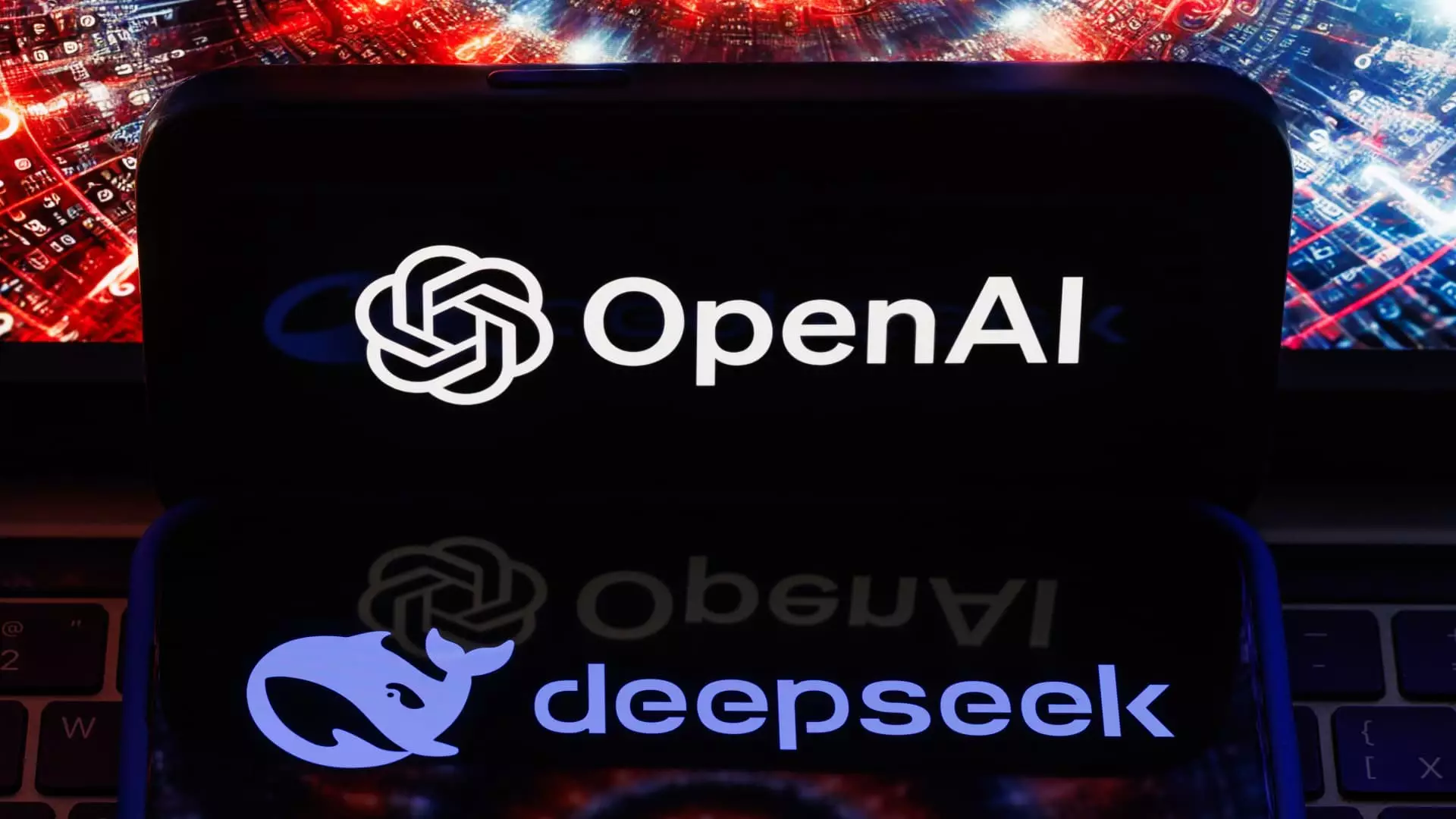The recent advancements made by DeepSeek, a Chinese artificial intelligence lab, have sparked significant discourse among technology leaders regarding the race for supremacy in artificial intelligence. Notable figures at the Artificial Intelligence Action Summit in France highlighted the emergence of DeepSeek as a powerful contender in the global AI landscape, challenging the long-held perception that the United States is the undisputed leader in this domain. The implications of DeepSeek’s innovations are vast, suggesting a robust competition that could reshape the international AI terrain.
DeepSeek’s revelation of an AI model developed with a training cost of less than $6 million represents a shocking contrast to the exorbitant investments commonly associated with U.S.-based AI firms. Companies like OpenAI and Anthropic have channeled billions into their technologies. This disparity raises critical questions about the models of economic scalability and efficiency that these organizations deploy, illuminating the nuanced dynamics of AI research and development.
Chris Lehane, OpenAI’s chief global affairs officer, articulated a sense of urgency in recognizing DeepSeek’s advancements, stating that the competition is no longer hypothetical but an established reality. With the capability to produce AI models that can match Western counterparts at a fraction of the cost, DeepSeek is redefining what it means to compete in the AI field. However, critics have scrutinized the ethical implications of DeepSeek’s models, particularly in light of reported censorship concerning sensitive political topics, which begs a broader discussion about the interplay between technology and governmental control.
These revelations arrive in the midst of rising concerns about the lack of comprehensive understanding the West has regarding China’s technological ambitions. As pointed out by Abishur Prakash of The Geopolitical Business, the West’s self-perception as the technological leader is increasingly being challenged by the rapid advancements seen in Chinese AI. The debate surrounding DeepSeek emphasizes the geopolitical stakes involved; advancements in AI are not merely technological feats but play a crucial role in shaping global power dynamics.
Though DeepSeek’s R1 model is heralded as a credible competitor against established systems like OpenAI’s o1, industry experts caution against overstating its implications. Notably, some skepticism arises from a report by SemiAnalysis, which indicated that DeepSeek’s operational costs may exceed $500 million, contradicting its profile as a low-cost alternative. This juxtaposition brings to light the complexities surrounding financial modeling in AI development and the importance of transparency when evaluating the sustainability of such innovations.
Additionally, discussions have emerged around potential methods DeepSeek may have employed to improve its model, notably through “distillation.” This process entails leveraging the outputs of more powerful AI models, which raises questions about the originality and independence of DeepSeek’s technology. OpenAI has expressed concern over these practices, suggesting a need for clarity around the utilization of data in this increasingly competitive market.
While DeepSeek has undeniably made strides, many tech executives maintain that its effects on established players like OpenAI and Anthropic remain limited for the moment. Victor Riparbelli from Synthesia expresses that despite technological advancements made by DeepSeek, the sheer volume and complexity of current AI workloads deployed by existing giants indicate a persistent dominance in the market.
Moreover, the notion that larger models would still govern the AI landscape is echoed by Meredith Whitaker of the Signal Foundation with her emphasis on the importance of substantial AI systems in sustaining the perception of power within the industry. The prevailing sentiment suggests that while efficiencies may be introduced, the fundamental “bigger is better” paradigm still holds substantial sway over the direction of AI development.
DeepSeek’s advancements undoubtedly signal a pivotal moment in the narrative of U.S.-China competition in artificial intelligence. The implications stretch beyond mere technological innovation, touching upon deeper concerns about ethics, market dynamics, and geopolitical stability. With the landscape of AI continuously evolving, industry stakeholders and policymakers must remain perceptive to not only the achievements of DeepSeek but also the ethical and strategic dimensions intertwined within these developments. As the race for AI supremacy intensifies, the future will require not only innovation but also an understanding of the complex interplay between technology and the socio-political frameworks surrounding it.


Leave a Reply